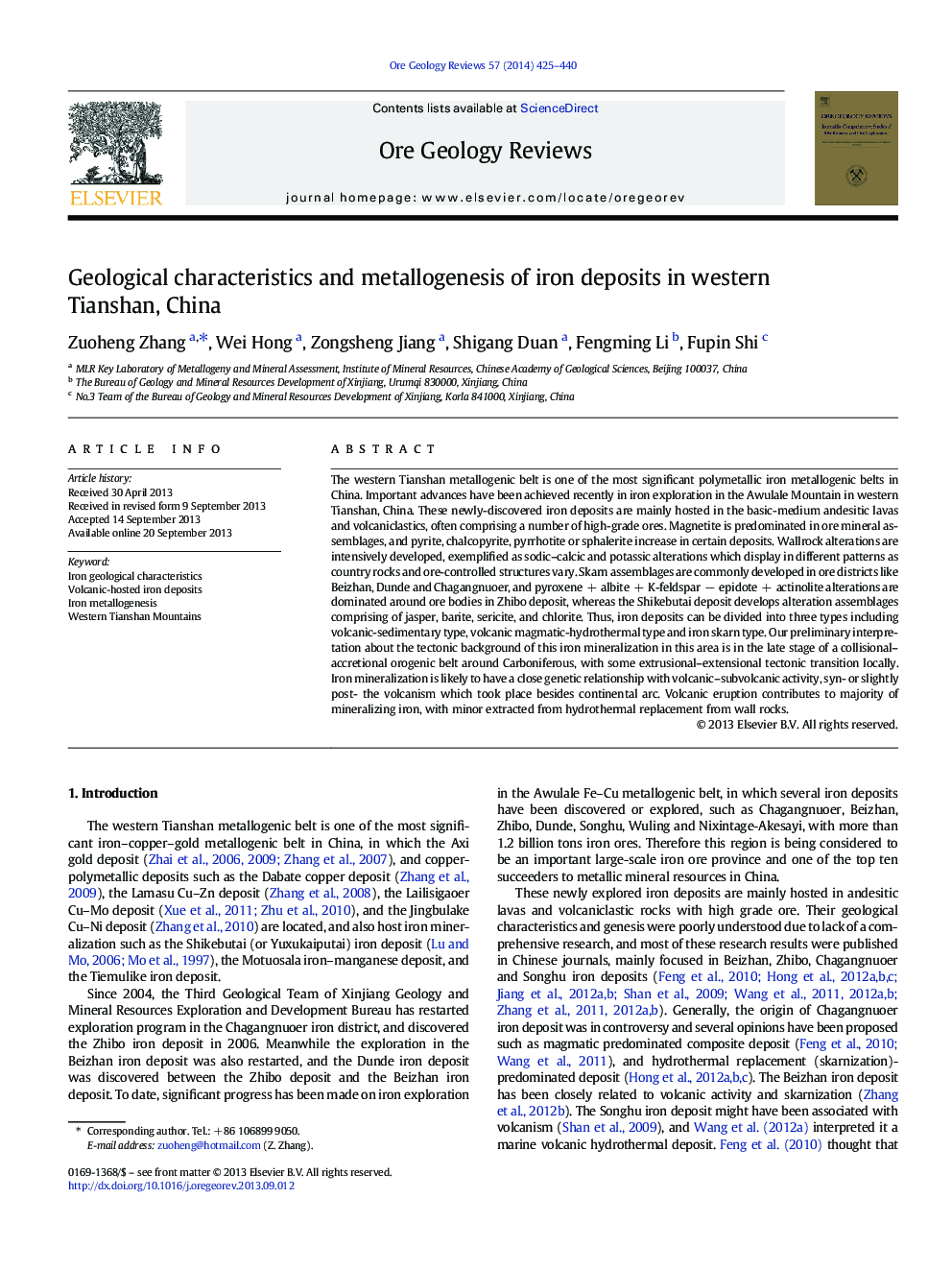| Article ID | Journal | Published Year | Pages | File Type |
|---|---|---|---|---|
| 4697518 | Ore Geology Reviews | 2014 | 16 Pages |
The western Tianshan metallogenic belt is one of the most significant polymetallic iron metallogenic belts in China. Important advances have been achieved recently in iron exploration in the Awulale Mountain in western Tianshan, China. These newly-discovered iron deposits are mainly hosted in the basic-medium andesitic lavas and volcaniclastics, often comprising a number of high-grade ores. Magnetite is predominated in ore mineral assemblages, and pyrite, chalcopyrite, pyrrhotite or sphalerite increase in certain deposits. Wallrock alterations are intensively developed, exemplified as sodic–calcic and potassic alterations which display in different patterns as country rocks and ore-controlled structures vary. Skarn assemblages are commonly developed in ore districts like Beizhan, Dunde and Chagangnuoer, and pyroxene + albite + K-feldspar − epidote + actinolite alterations are dominated around ore bodies in Zhibo deposit, whereas the Shikebutai deposit develops alteration assemblages comprising of jasper, barite, sericite, and chlorite. Thus, iron deposits can be divided into three types including volcanic-sedimentary type, volcanic magmatic-hydrothermal type and iron skarn type. Our preliminary interpretation about the tectonic background of this iron mineralization in this area is in the late stage of a collisional–accretional orogenic belt around Carboniferous, with some extrusional–extensional tectonic transition locally. Iron mineralization is likely to have a close genetic relationship with volcanic–subvolcanic activity, syn- or slightly post- the volcanism which took place besides continental arc. Volcanic eruption contributes to majority of mineralizing iron, with minor extracted from hydrothermal replacement from wall rocks.
